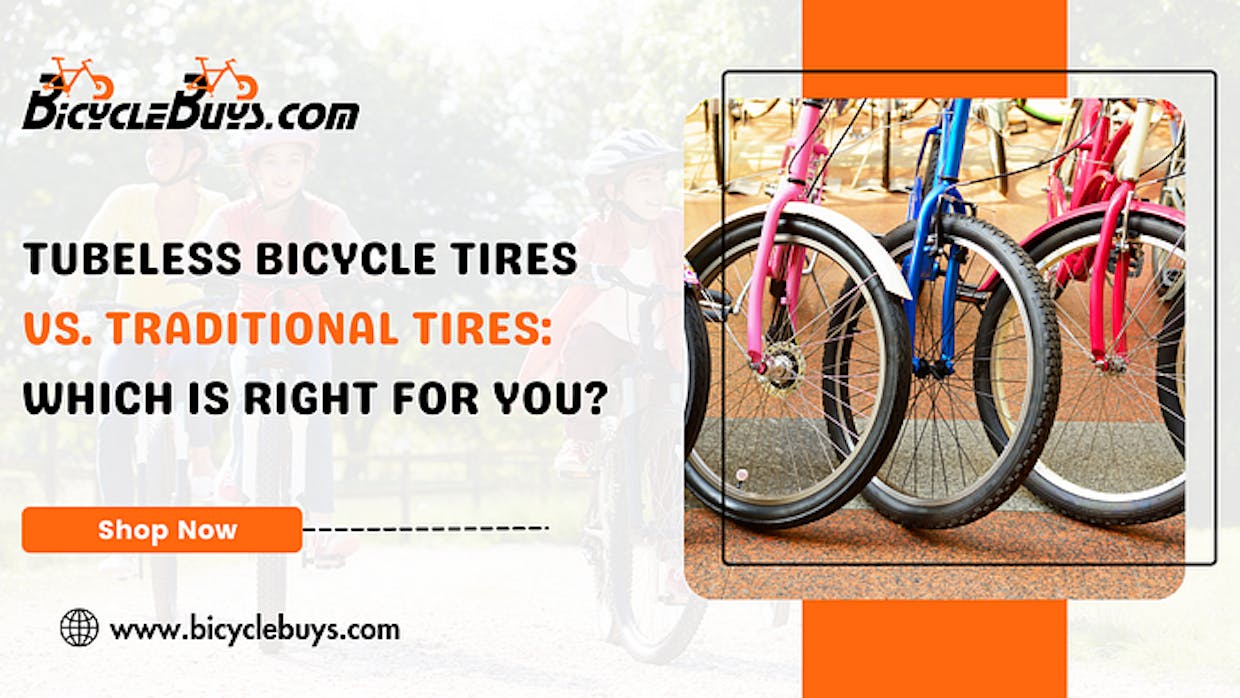As a cyclist, choosing the right tire can make a massive difference in your riding experience. Two of the most popular options available are tubeless bicycle tires and traditional tires. Understanding the differences between the two can be beneficial, especially if you want to make an informed decision. Let’s explore the advantages and disadvantages of both tire types to help you determine which one is right for you.
What are traditional tires?
Traditional tires are the most commonly used type of tires and are designed to accommodate an inner tube. They are made of a rubber casing and are reinforced with a layer of fabric, wire, or aramid fibers to hold the tube's pressure inside. Traditional tires require an extra tube to be inserted within the tire and inflated to the recommended pressure level.
What are tubeless bicycle tires?
These are designed to use an airtight sealant that is incorporated into the tire to create an inner chamber without an extra tube. They are made of a more durable rubber casing and are usually reinforced with multiple layers, making them more resistant to punctures. Tubeless tires are more prevalent today and come in two types, standard tubeless tires and tubeless-ready tires. The latter type requires a tubeless rim and sealant, while the former is a fully tubeless system.
Advantages of Traditional Tires
- Cost: Traditional tires are less expensive than tubeless tires and come in a variety of sizes and styles.
- Easy to repair: You can repair traditional tires with a patch kit relatively quickly and easily.
- Wider range: A wider range of tube sizes and tire widths are available with traditional tires.
Disadvantages of Traditional Tires
- Increased risk of punctures: Traditional tires are more prone to punctures and pinch flats than tubeless tires since they have an inner tube layer that can be punctured.
- More challenging maintenance: You have to change the tubes regularly to maintain optimal performance.
- Heavier: Traditional tires are weighty and may compromise your bike's overall performance.
Advantages of Tubeless Bicycle Tires
- Lower risk of punctures: Tubeless tires offer a more puncture-resistant design by removing the inner tube layer of traditional tires.
- No pinch flats: Tubeless tires don't have pinch flats, which are common when traditional tires bottom out on rough terrain.
- Low pressure: With a tubeless tire, you can ride with less pressure, which can increase shock absorption and traction.
Disadvantages of Tubeless Bicycle Tires
Cost: Tubeless tires are more expensive than traditional tires because they need a specific rim and valve, a sealant, and professional installation.
Installation: Setting up a tubeless system is more complicated and requires specific tools and expertise.
Maintenance: Tubeless tires may be difficult to maintain because the sealant needs to be refilled regularly.
So, Which Is Right for You?
It depends on your riding style and preferences. The appropriate tire type depends on individual riders. Traditional tires are ideal for people who are on a tight budget, don't ride over difficult terrain, and:
- Would like to quickly repair flats
- Would like a broader range of available tires
- On the other hand, tubeless bicycle tires are a better fit for:
- High-performance athletes
- Cyclists riding over rough terrain
- Commuters who want a comfortable ride
- Riders who are willing to invest in a long-lasting and reliable tire
- Performance and Ride Quality
Ride quality and performance are crucial factors to consider when choosing between these two. Tubeless tires offer several advantages in terms of performance. They provide a smoother ride due to the ability to run lower air pressures, which improves shock absorption and traction. This makes them particularly beneficial for off-road or rough terrain cycling.
Additionally, tubeless tires eliminate the risk of pinch flats, which can occur when traditional tires bottom out on uneven surfaces. On the other hand, traditional tires might feel more robust and unaffected by punctures if you primarily ride on smoother surfaces. It's essential to assess your riding style, the terrain you'll be encountering, and your desired performance to determine which tire type will offer the best ride quality for you.
Conclusion
Choosing the right tire can have a massive impact on your riding experience. Traditional tires are cost-effective and easier to maintain, while tubeless bicycle tires offer a smoother and superior ride, a lower risk of flats, and more flexibility in terms of air pressure. The decision between the two comes down to personal preference, and the above information should help guide your decision. Shop now!
Remember, whatever tire you choose, stay safe, and happy riding!







